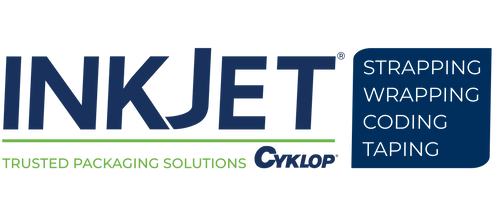The Basics of Inkjet Ink Formulation
For decades, continuous inkjet (CIJ) and thermal inkjet (TIJ) printers have dominated the industrial product printing field. Used across numerous industries, CIJ and TIJ printers are versatile machines that can create everything from simple alphanumeric markings to machine-scannable codes and brand logos.
Continuous inkjet printers are larger than thermal inkjet models and are designed for high-speed product coding on conveyor-powered production lines. CIJ printers offer printing speeds over ~300 m/min and are built to withstand harsh environmental factors such as high heat and moisture. While higher-end TIJ printers like the Anser X1 also offer high-speed printing and substantial environmental fortifications, most TIJ models specialize in higher-quality printing and do not offer printing speeds beyond ~120 m/min. However, they have a lower upfront price and are easier to maintain than CIJ printers, making them a great choice for companies that do not require the industrial speed and resilience of a CIJ system.
CIJ and TIJ printers are also compatible with a wide variety of materials, including glass bottles, flexible plastic packaging, cardboard cartons, and more. These capabilities make CIJ and TIJ printers ideal for:
- Food packaging
- Beverage bottling and canning
- Chemical packaging
- Personal care product packaging
- Cannabis and CBD packaging
- Pet food manufacturing
- Metal pipe marking and coding
- Wire and cable extrusion
- Plastic and metal extrusion
- Electrical component coding
- Pharmaceutical applications
To meet the coding requirements of these different industries, ink developers create diverse formulas for CIJ and TIJ printers. During the inkjet ink formulation process, developers utilize different substances to account for factors such as substrate compatibility, drying times, temperature resistance, and more.
Below, we explore the inkjet ink formulation process and explain which types of ink will work best in specific situations.
Diverse Coding Needs Require Specific Formulas
Coding applications vary greatly from company to company for a variety of reasons. For one, products and product packaging can be made from a wide range of materials and take on many different shapes. Common examples include:
- Glass bottles
- Cardboard boxes
- Metal sheet and foil
- Plastic bags
- Rigid plastic containers
- Flexible packaging
- Shrinkwrap/flexible film
These substrates all have unique surface properties that influence the success of different ink formulas. For example, an ink designed to sink into a porous material such as cardboard will create messy, unreadable codes on a non-porous material such as rigid plastic or glass.
Product coding needs are also influenced by internal processes and environmental factors. Many food, beverage, and pharmaceutical production lines, for instance, are equipped with automated packaging machines such as vertical form fill machines. In these cases, companies often need to use quick-drying inks so that codes won’t smear further down the line.
Potentially disruptive environmental factors must be accounted for as well, including:
- Freezing temperatures
- High heat
- Water and high moisture
- Dust and other airborne particles
Given all of these considerations, companies must utilize ink formulas that are designed to meet their unique coding needs. Fortunately, today’s ink market is filled with diverse solutions that are up to the task.
Inkjet Ink Formulation: How Ink Developers Accommodate Diverse Product Marking Needs
Ink developers create formulas with distinct properties and application specialties to fit a variety of coding requirements. Our next section will detail the major categories of inkjet ink; however, let’s first review the basic inkjet ink formulation process.
Inkjet ink is primarily composed of seven elements:
- Dyes or pigments to color the ink
- Dispersing agents (for pigmented inks) to aid ink drop stratification
- Wetting agents to help control surface tension
- Humectants to prevent dryness and improve viscosity
- Penetration enhancers to improve application properties
- Polymer binders to enhance substrate adherence
- Solvent to improve viscosity
To create formulas, developers more or less follow this six-step process:
- Introduce resin as the base of the formula: All subsequent materials will bind to the resin to form a proper mixture.
- Add dye or pigment: The dye or pigment will give the formula its color and enable visibility on the substrate.
- Introduce solvent: Solvent is used to dissolve the resin and dye to form a viscous mixture.
- Mix fluid: All other ingredients are added together and mixed to create a homogenous solution.
- Filter the solution: The ink solution is placed through a filtration system to remove all insoluble elements.
- Test: The filtered ink solution is tested to ensure that it can complete the intended application.
Different resins, pigments, solvents, and additives will change the properties of the formula. Of all these materials, solvents have perhaps the largest effect. As a result, ink formulas are often categorized based on what solvents they contain. Next, we will explore the effects of these solvents.
The Most Popular Types of Inkjet Ink
Ink producers like InkJet, Inc. maintain robust portfolios to meet the coding needs of diverse companies and industries. Based on their formulation, these inks all carry different:
- Substrate compatibilities
- Drying times
- Color-producing qualities
- Chemical-resistance
- Environmentally-friendly qualities
Broadly speaking, we can categorize inks based on what solvents are used to create them. Although many formulas contain more than one solvent, it’s helpful to know what qualities are associated with which materials.
Below are some of today’s most popular inkjet ink formulations:
|
|
|
|
|
|
|
|
|
|
While this general knowledge can help guide you toward the right ink selection, it’s important to work with an expert to find the perfect ink to meet your needs. If you are looking for a new ink formula, the InkJet, Inc. team is happy to discuss your application requirements and help you find the ideal formula for your operation.
Looking for the Perfect Ink for Your Applications? InkJet, Inc. Can Help You Find It
Coding applications are diverse and change from one operation to the next. To ensure coding success, it’s essential to accommodate key elements such as:
- Substrate material
- Additional internal processes
- Harsh environmental factors
In many cases, these variables and others require the use of specialty inks. At InkJet, Inc., we can help you find the perfect formula for your applications.
For more than 30 years, InkJet, Inc. has been developing and selling high-quality ink consumables. From aftermarket inks to specialty formulas, InkJet, Inc.’s robust offerings meet the needs of different industries and operations. Contact us today to learn which formulas are right for you.
For more information about inkjet ink formulation or specialty consumables, contact InkJet, Inc. online or call 1(800) 280-3245.



